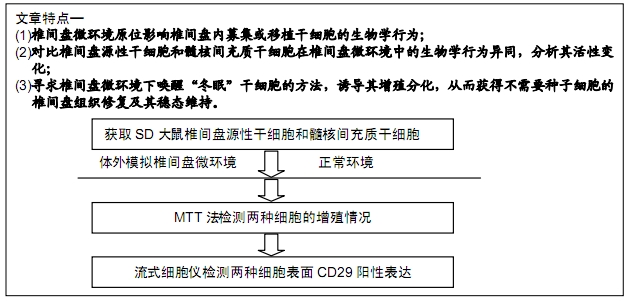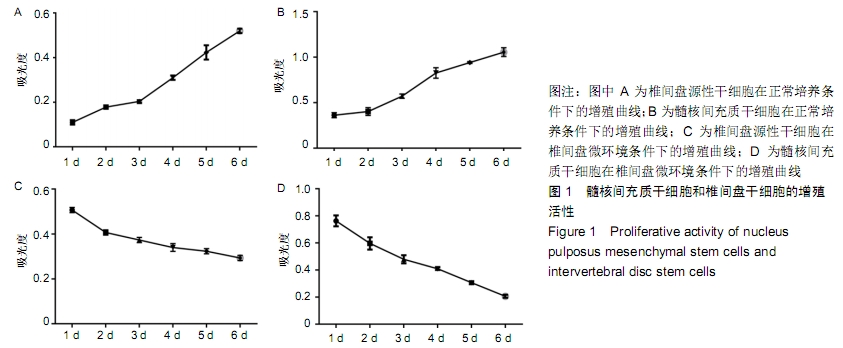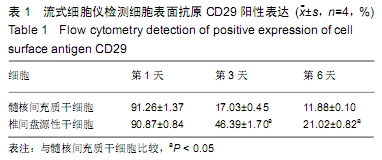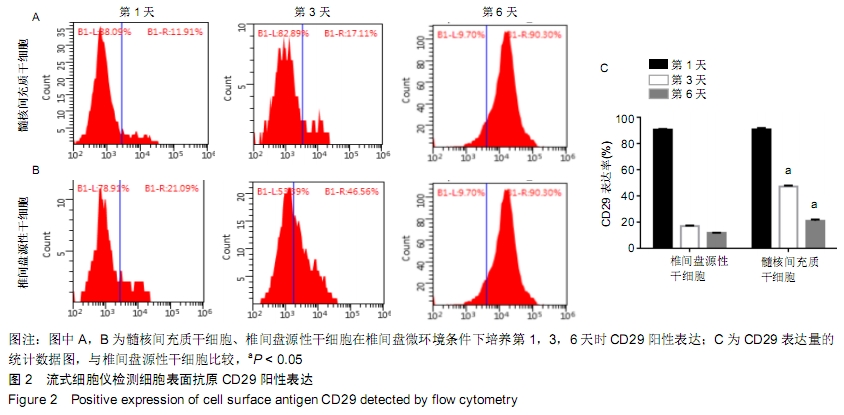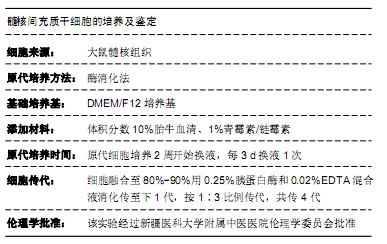[1] MAETZEL A, LI L. The economic burden of low back pain: a review of studies published between 1996 and 2001. Best Pract Res Clin Rheumatol. 2002;16(1):23-30.
[2] VERGROESEN PP, KINGMA I, EMANUEL KS, et al. Mechanics and biology in intervertebral disc degeneration: a vicious circle. Osteoarthritis Cartilage. 2015;23(7): 1057-1070.
[3] CHAN SC, WALSER J, KÄPPELI P, et al. Region specific response of intervertebral disc cells to complex dynamic loading: an organ culture study using a dynamic torsion-compression bioreactor. PLoS One. 2013;8(8): e72489.
[4] LIVELY MW. Sports medicine approach to low back pain. South Med J. 2002;95(6):642-646.
[5] CHEUNG KM, KARPPINEN J, CHAN D, et al. Prevalence and pattern of lumbar magnetic resonance imaging changes in a population study of one thousand forty-three individuals. Spine (Phila Pa 1976). 2009;34(9):934-940.
[6] SAMARTZIS D, KARPPINEN J, MOK F, et al. A population-based study of juvenile disc degeneration and its association with overweight and obesity, low back pain, and diminished functional status. J Bone Joint Surg Am. 2011; 93(7):662-670.
[7] TAKATALO J, KARPPINEN J, NIINIMÄKI J, et al. Does lumbar disc degeneration on magnetic resonance imaging associate with low back symptom severity in young Finnish adults? Spine (Phila Pa 1976). 2011;36(25):2180-2189.
[8] COLOMBIER P, CLOUET J, HAMEL O, et al. The lumbar intervertebral disc: from embryonic development to degeneration. Joint Bone Spine. 2014;81(2):125-129.
[9] 梁航,邓享誉,邵增务.椎间盘内源性干细胞在椎间盘组织修复再生中的研究进展[J].中国修复重建外科杂志,2017,31(10): 1267-1272.
[10] 陈杨,梦凡,熊伟.椎间盘退行性变细胞治疗的研究进展[J].骨科, 2018,9(2):154-158.
[11] 黄泽楠,冯新民,王静成,等.辛伐他汀调控内源性干细胞进行退变椎间盘的内源性修复和重建[J].中国组织工程研究,2017,21(5): 809-814.
[12] 邵建树,吴小涛,王运涛,等.兔骨髓间充质干细胞与髓核细胞共培养后的营养效应和类髓核分化效应[J].中国脊柱脊髓杂志, 2009, 19(5):381-387.
[13] WANG H, ZHOU Y, HUANG B, et al. Utilization of stem cells in alginate for nucleus pulposus tissue engineering. Tissue Eng Part A. 2014;20(5-6):908-920.
[14] CLARKE LE, RICHARDSON SM, HOYLAND JA. Harnessing the Potential of Mesenchymal Stem Cells for IVD Regeneration. Curr Stem Cell Res Ther. 2015;10(4):296-306.
[15] CAI F, WU XT, XIE XH, et al. Evaluation of intervertebral disc regeneration with implantation of bone marrow mesenchymal stem cells (BMSCs) using quantitative T2 mapping: a study in rabbits. Int Orthop. 2015;39(1):149-159.
[16] WANG C, RUAN DK, ZHANG C, et al. Effects of adeno-associated virus-2-mediated human BMP-7 gene transfection on the phenotype of nucleus pulposus cells. J Orthop Res. 2011;29(6):838-845.
[17] ZHANG YJ, UITTO J, THONAR E. Cell based gene therapy for the degenerating intervertebral disc. Am J Phys Med Rehab. 2006;85(3): 248-249.
[18] MOON SH, NISHIDA K, GILBERTSON LG, et al. Biologic response of human intervertebral disc cells to gene therapy cocktail. Spine (Phila Pa 1976). 2008;33(17):1850-1855.
[19] BRODIN H. Paths of nutrition in articular cartilage and intervertebral discs. Acta Orthop Scand. 1955;24(3):177-183.
[20] GRUNHAGEN T, SHIRAZI-ADL A, FAIRBANK JC, et al. Intervertebral disk nutrition: a review of factors influencing concentrations of nutrients and metabolites. Orthop Clin North Am. 2011;42(4):465-477.
[21] HOLM S, MAROUDAS A, URBAN JP, et al. Nutrition of the intervertebral disc: solute transport and metabolism. Connect Tissue Res. 1981;8(2):101-119.
[22] RISBUD MV, SHAPIRO IM. Role of cytokines in intervertebral disc degeneration: pain and disc content. Nat Rev Rheumatol. 2014;10(1):44-56.
[23] KROCK E, ROSENZWEIG DH, Haglund L. The Inflammatory Milieu of the Degenerate Disc: Is Mesenchymal Stem Cell-based Therapy for Intervertebral Disc Repair a Feasible Approach? Curr Stem Cell Res Ther. 2015;10(4):317-328.
[24] WUERTZ K, HAGLUND L. Inflammatory mediators in intervertebral disk degeneration and discogenic pain. Global Spine J. 2013;3(3):175-184.
[25] LI L, CLEVERS H. Coexistence of quiescent and active adult stem cells in mammals. Science. 2010;327(5965):542-545.
[26] LIM JY, LOISELLE AE, LEE JS, et al. Optimizing the osteogenic potential of adult stem cells for skeletal regeneration. J Orthop Res. 2011;29(11):1627-1633.
[27] OROZCO L, SOLER R, MORERA C, et al. Intervertebral disc repair by autologous mesenchymal bone marrow cells: a pilot study. Transplantation. 2011;92(7):822-828.
[28] WATANABE T, SAKAI D, YAMAMOTO Y, et al. Human nucleus pulposus cells significantly enhanced biological properties in a coculture system with direct cell-to-cell contact with autologous mesenchymal stem cells. J Orthop Res. 2010; 28(5):623-630.
[29] MIYAMOTO T, MUNETA T, TABUCHI T, et al. Intradiscal transplantation of synovial mesenchymal stem cells prevents intervertebral disc degeneration through suppression of matrix metalloproteinase-related genes in nucleus pulposus cells in rabbits. Arthritis Res Ther. 2010;12(6):R206.
[30] YIM RL, LEE JT, BOW CH, et al. A systematic review of the safety and efficacy of mesenchymal stem cells for disc degeneration: insights and future directions for regenerative therapeutics. Stem Cells Dev. 2014;23(21):2553-2567.
[31] JEONG JH, LEE JH, JIN ES, et al. Regeneration of intervertebral discs in a rat disc degeneration model by implanted adipose-tissue-derived stromal cells. Acta Neurochir (Wien). 2010;152(10):1771-1777.
[32] OROZCO L, SOLER R, MORERA C, et al. Intervertebral disc repair by autologous mesenchymal bone marrow cells: a pilot study. Transplantation. 2011;92(7):822-828.
[33] VADALÀ G, SOWA G, HUBERT M, et al. Mesenchymal stem cells injection in degenerated intervertebral disc: cell leakage may induce osteophyte formation. J Tissue Eng Regen Med. 2012;6(5):348-355.
[34] NIKITINA VA, CHAUSHEVA AI. Risk of genetic transformation of multipotent mesenchymal stromal cells in vitro. Genetika. 2014;50(1):100-105.
[35] HENRIKSSON HB, SVALA E, SKIOLDEBRAND E, et al. Support of concept that migrating progenitor cells from stem cell niches contribute to normal regeneration of the adult mammal intervertebral disc: a descriptive study in the New Zealand white rabbit. Spine (Phila Pa 1976). 2012;37(9): 722-732.
[36] KAMAT P, SCHWEIZER R, KAENEL P, et al. Human Adipose-Derived Mesenchymal Stromal Cells May Promote Breast Cancer Progression and Metastatic Spread. Plast Reconstr Surg. 2015;136(1):76-84.
|
